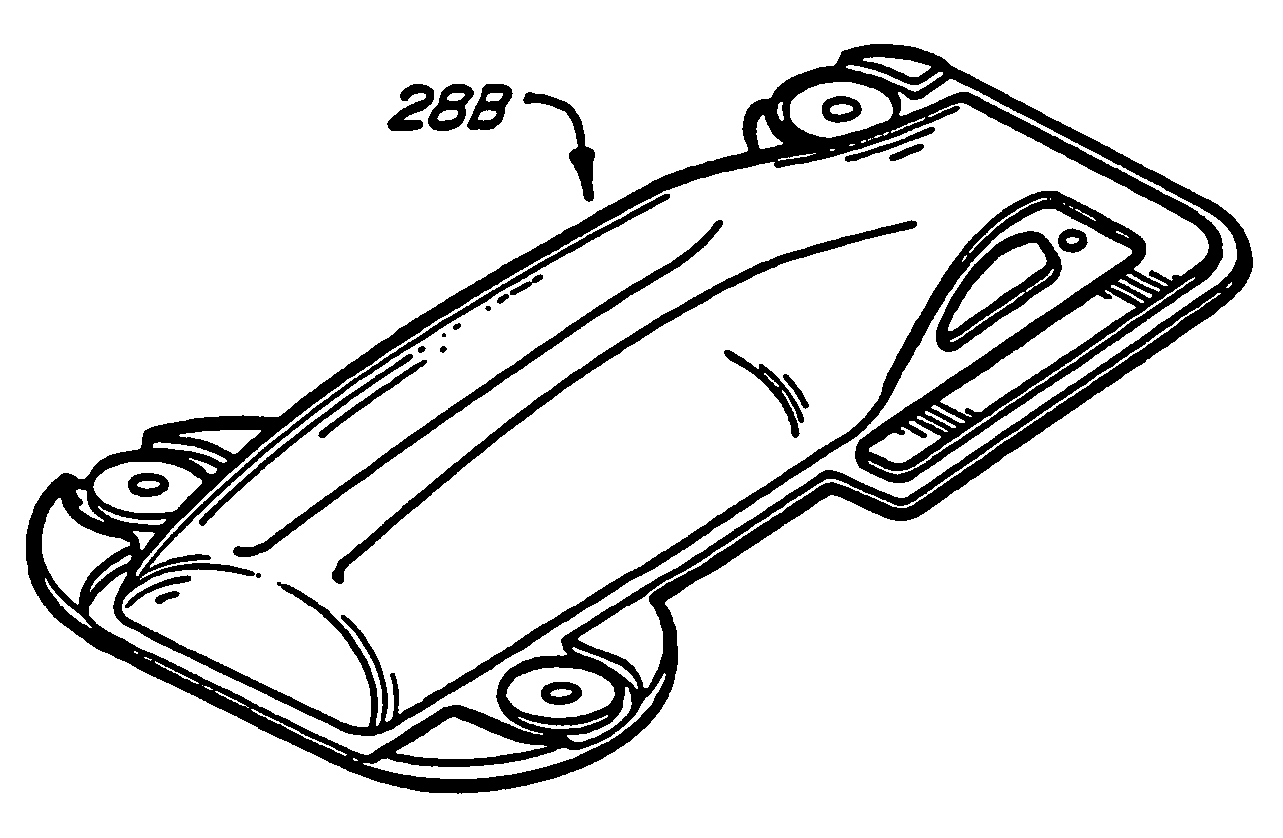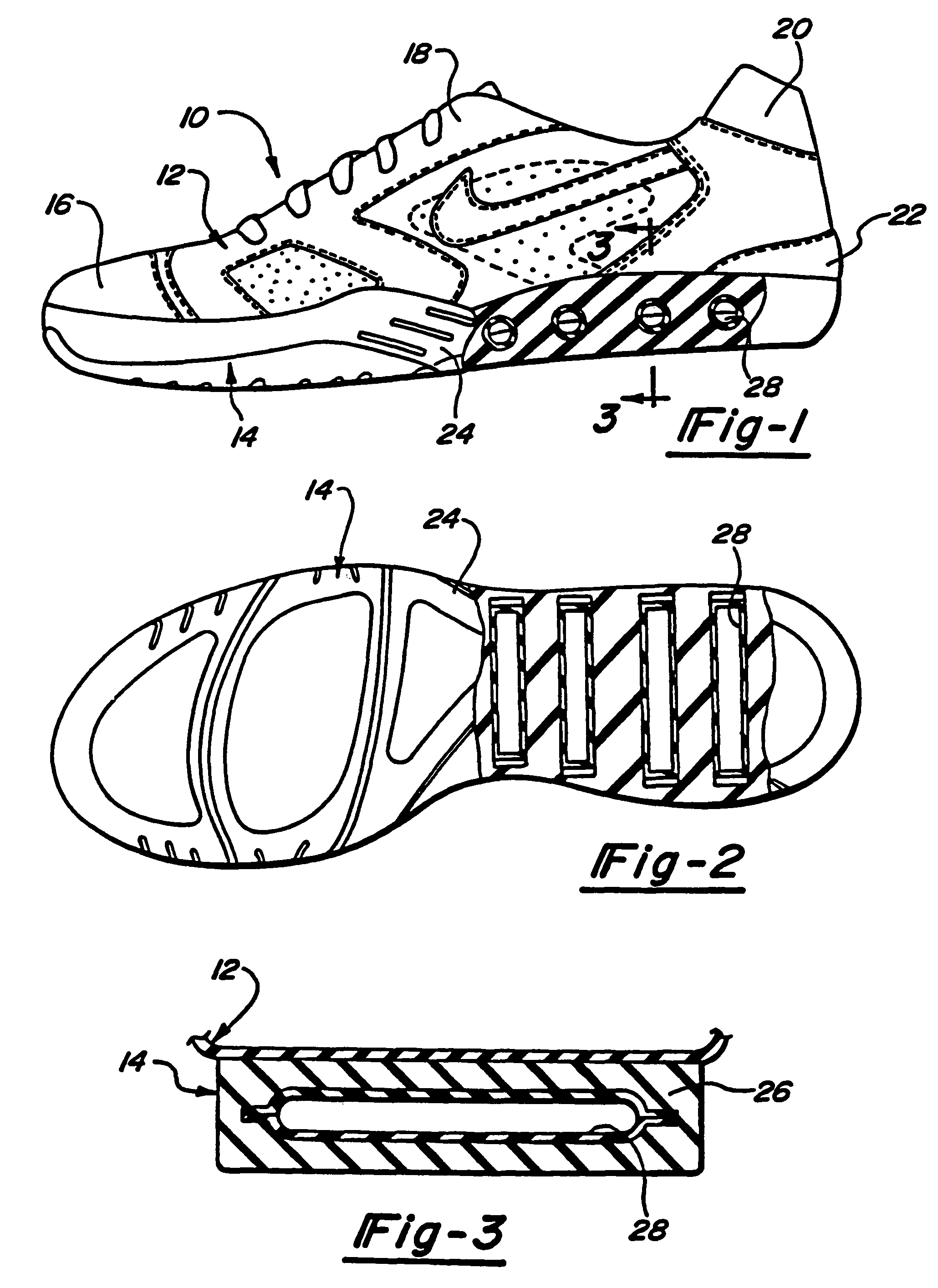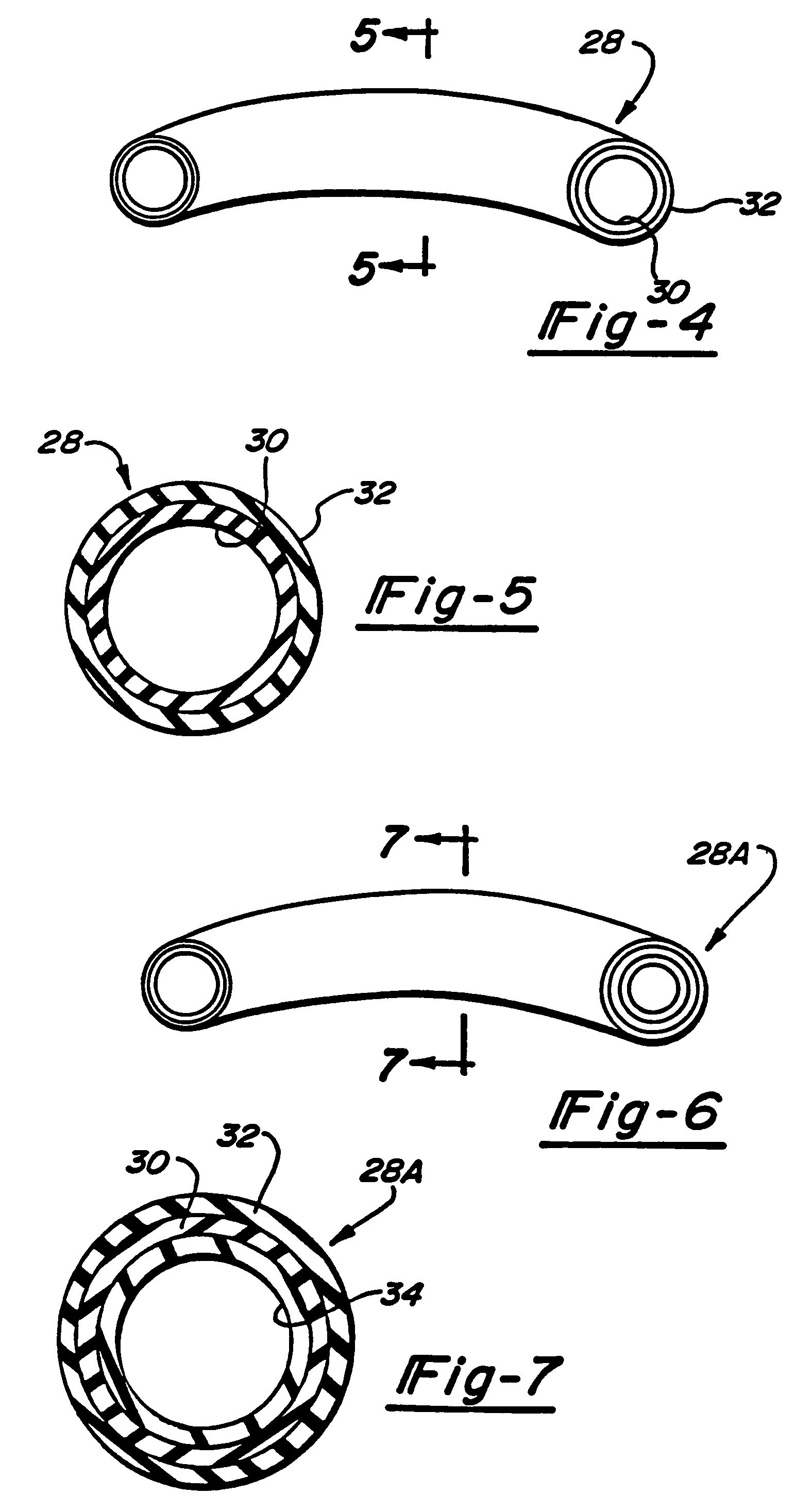Gas-filled cushioning device
- Summary
- Abstract
- Description
- Claims
- Application Information
AI Technical Summary
Benefits of technology
Problems solved by technology
Method used
Image
Examples
Embodiment Construction
[0067]Referring to FIGS. 1-5, there is shown an athletic shoe, including a sole structure and a cushioning device as one example of a product employing a barrier membrane in accordance with the teachings of the present invention. The shoe 10 includes a shoe upper 12 to which the sole 14 is attached. The shoe upper 12 can be formed from a variety of conventional materials including, but not limited to, leathers, vinyls, nylons and other generally woven fibrous materials. Typically, the shoe upper 12 includes reinforcements located around the toe 16, the lacing eyelets 18, the top of the shoe 20 and along the heel area 22. As with most athletic shoes, the sole 14 extends generally the entire length of the shoe 10 from the toe region 20 through the arch region 24 and back to the heel portion 22.
[0068]The sole structure 14 includes one or more selectively permeable barrier membranes 28 in accordance with the present invention, which are preferably disposed in the midsole H of the sole s...
PUM
| Property | Measurement | Unit |
|---|---|---|
| Thickness | aaaaa | aaaaa |
| Thickness | aaaaa | aaaaa |
| Thickness | aaaaa | aaaaa |
Abstract
Description
Claims
Application Information
 Login to View More
Login to View More - R&D
- Intellectual Property
- Life Sciences
- Materials
- Tech Scout
- Unparalleled Data Quality
- Higher Quality Content
- 60% Fewer Hallucinations
Browse by: Latest US Patents, China's latest patents, Technical Efficacy Thesaurus, Application Domain, Technology Topic, Popular Technical Reports.
© 2025 PatSnap. All rights reserved.Legal|Privacy policy|Modern Slavery Act Transparency Statement|Sitemap|About US| Contact US: help@patsnap.com



